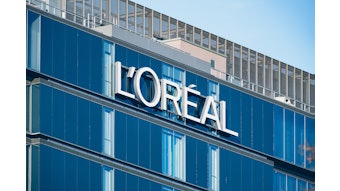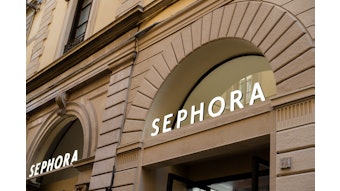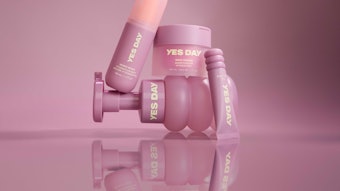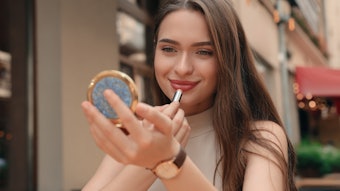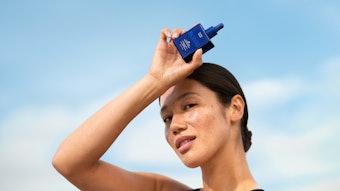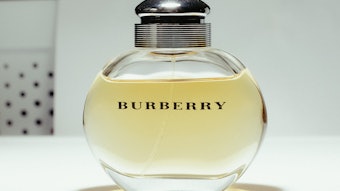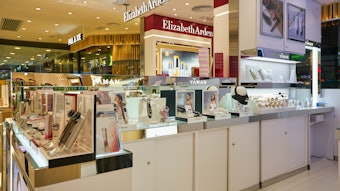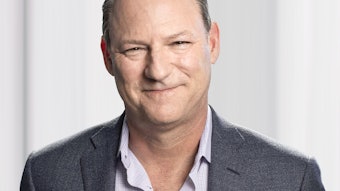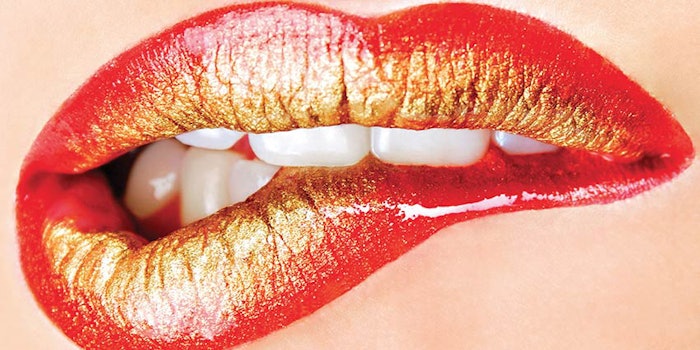
If a picture is worth a thousand words, consider the power imagery holds for a brand. Smart brand managers know that the right imagery can connect with distracted consumers better than words alone. Since today’s consumer makes purchasing decisions within mere seconds, visualizing your brand or product’s promise is essential.
Text Fatigue
Less is more when it comes to text—and words are often entirely overlooked by customers. The role of a brand’s graphics should be to “show” rather than “tell.” Beauty brands need to communicate the efficacy of their formulations and build trust with consumers.
With so many products touting “I’m the best” at retail, it’s impossible to differentiate one from another using words alone. Images can convey complex information, create emotional connections, and help differentiate you from the competition.
Know Your Story
As all brands are unique, the challenge lies in choosing the best story to showcase. Some brands are scientifically driven, while others are emotionally driven. Some brands convey an aspirational lifestyle, while others tout ancient beauty secrets from ingredients passed down over the ages.
Naming can be fundamental to a brand’s positioning.
One brand may be rooted in performance and have clinically-backed results, while another might be based on the founder’s health journey via the purity of ingredients. Depending on your brand’s unique positioning, you will need to effectively visualize these critical brand stories in novel and compelling ways.
What a Brand Name Says
Naming can be fundamental to a brand’s positioning. If a professional has backed your brand and developed or guided your formulations, you have an advantage. A clear presentation of names such as SkinMedica, GoldfadenMD and Dr. Dennis Gross Skincare helps convey a clinical approach before a consumer knows anything else about the brand.
Using science to back your promised results helps build trust.
Brands with an “MD” in their name often use clinical styling to highlight their pedigree. This helps emphasize their medical approach, providing a good start in visualizing their brand promise. In addition to a clinical-sounding name, the use of the caduceus (twin snakes on a winged cross) or pharmaceutical cross, and colors such as silver, white and blue help create a “pro-level” feel.
Scientific Data
Using science to back your promised results helps build trust. Statistical results from a large sample group can be very compelling. However, unambiguous results are essential. Statistics that do not demonstrate result of 80% or higher probably aren’t worth promoting. When results are significant, the challenge still remains how to best convey this information.
Beware Befores/Afters
We live in an age in which scientific photography can be effective. Skin imaging and specialty cameras such as the VISIA Complexion Analysis can accurately capture subtle changes in skin treatments, making them feel quite dramatic.
While before and after images can be effective, they rarely should be used as the main imagery. Such images also produce powerful negative reactions, and some consumers may only remember the befores, not the intended afters. This imagery is often best for the sides of a package or in-store displays.
Getting Iconic
Similarly, if your product has proprietary or patented scientific formulations, diagrams and infographics can help to showcase complex processes or systems, where words would be too cumbersome.
Often an icon, or a visual image of how the science is happening within the hair, skin or at the molecular level is enough to make your point clear. Consumers only need a simple explanation. Anything more risks being seen as “too complicated,” potentially costing you the sale.
Today’s modern approach toward luxury embraces principles of minimalism.
Icons help convey details about a wide range of topics such as ingredients, regimen steps and product concentration. Well-executed icons can become powerful replacements for words, and are particularly useful for international brands. The very presence of icons can help convey that there is a technical precision to the product.
Lifestyle Cues
Some brands scream luxury, while others may whisper it. There is a long tradition of visual cues that imply decadence: gold, silver, deep jewel tones, all-capital serif typography, crests and seals. Today’s modern approach toward luxury embraces principles of minimalism: rich blacks, sans serif typography—still featuring all caps, fewer words, and tone-on-tone production techniques leveraging gloss and matte coatings.
Whether a brand was born in a state-of-the-art lab or a country kitchen, people relate best to the human story.
Natural brands have traditionally represented their ingredients visually, using photography or illustration. Brand color and packaging graphics tend to be nature-inspired, using shades of browns and greens. “Natural” used to imply an austere sensibility, free from superfluous decoration.
However, many brands have cleaned up their formulations to eliminate toxic ingredients and elevated their branding to appeal to conscientious luxury consumers. As a result, showcasing “natural” has become more complex. It is not unusual to see glimpses of fluorescent colors, metallic foils, and even the occasional hint of wit and humor.
Men’s brands (or men’s lines) typically use darker colors, deep grays and silvers. Simple, bold statements and large statistics always connect well with traditional male audiences. Natural materials such as woods, leathers and metals also help create a masculine aesthetic.
Humanizing Brands
Whether a brand was born in a state-of-the-art lab or a country kitchen, people relate best to the human story. Typically, the founder’s story is one that consumers look for—though this is not the only way to go.
Sometimes, a founder’s story may not be unique in the category. Heritage brands may have been bought and sold many times, and the founder is no longer involved with the brand—or even living.
Luckily, there are other ways brands can humanize themselves. A doctor’s endorsement is a great way to build trust, and a huge advantage. A certified professional who can attest to your product’s effectiveness widens the gap between you and your competition.
An ingredient beautifully rendered on the face of a package can be compelling and far more effective than words alone.
A famous face can be a welcome presence to some, but not others. Not every brand can afford an A-list celebrity to be the face of their brand, nor should it be seen as necessary.
Besides, the high cost of securing such endorsements may not translate into a profitable investment. Savvy consumers can detect insincere endorsements. In fact, relatable people abound, and many lesser-known athletes and real-world users can often embody the lifestyle image of your brand in more meaningful ways than an actor or model.
Brands can often find relatable stories from within their own customer base. These are the true believers who would be thrilled to be ambassadors for the brands they love so much. After all, wouldn’t you want an enthusiastic true believer to speak for your brand rather than someone you’re simply paying to pretend?
Regardless of who they are, your spokesperson should have a significant following of their own on social media. Through your spokesperson’s fan base, you inherit the benefits of their social proof, helping to increase your own.
Ingredient Imagery
Photography, illustrations, icons and diagrams can all be effective tools in showcasing key ingredients and the properties they possess. An ingredient beautifully rendered on the face of a package can be compelling and far more effective than words alone. In stores, such packages also “pop” from a distance.
Natural brands may choose to seek endorsements such as USDA Certified Organic, NSF Organic, Fair Trade Certified and Cradle-to-Cradle.
While key ingredient imagery has long been the domain of natural brands, this is an approach all brands should at least consider. Often, consumers are shopping a product category by ingredient because of its benefits.
Take bath products as an example. Lavender may signal a sense of calming, and peppermint a sense of invigoration. Hot ingredients such as açai berry, baobab oil and omega-3 are all great to showcase directly, allowing people searching for those ingredients to easily find your product.
The Company You Keep
Third-party endorsements pack a wealth of implied information into a tiny symbol, and can create an enormous amount of trust. They can be easily scanned by consumers’ busy eyes.
The power of an endorsed badge, icon or logo can make the difference in a consumer purchasing one product over another. While many endorsements may seem to carry an implicit sense of good connotations, careful attention should be paid to your alliances. You’ll be known be the company you keep—for better or for worse.
Natural brands may choose to seek endorsements such as USDA Certified Organic, NSF Organic, Fair Trade Certified and Cradle-to-Cradle. However, you needn’t be 100% natural to tout that you may be cruelty-free or certified vegan, fair trade certified or even women-owned.
Placement of these icons is important. We recommend that brands strike the right balance, proudly displaying these endorsements, while making sure not to lose their own brand equity in the process. The brand Shea Moisture has a wide variety of endorsements. They have dedicated a place on all their packaging to showcase these icons. They proudly reinforce their promise every time a consumer holds the product in their hand.
The Best Approach For You
Every brand has a story to tell. Within seconds, your packaging must visualize your brand promise and create an emotional connection. Whether you leverage your brand’s name, results, lifestyle, spokesperson, ingredients or certification—all work toward building trust and credibility. The right imagery makes this possible.
Sheri L Koetting ([email protected]) is the co-founder and chief strategist of MSLK, a branding agency based in New York. MSLK specializes in helping beauty brands find their voice in today’s crowded marketplace through 360° brand positioning—from overall brand strategy to brand identity, packaging, retail experience, websites and social media campaigns.

